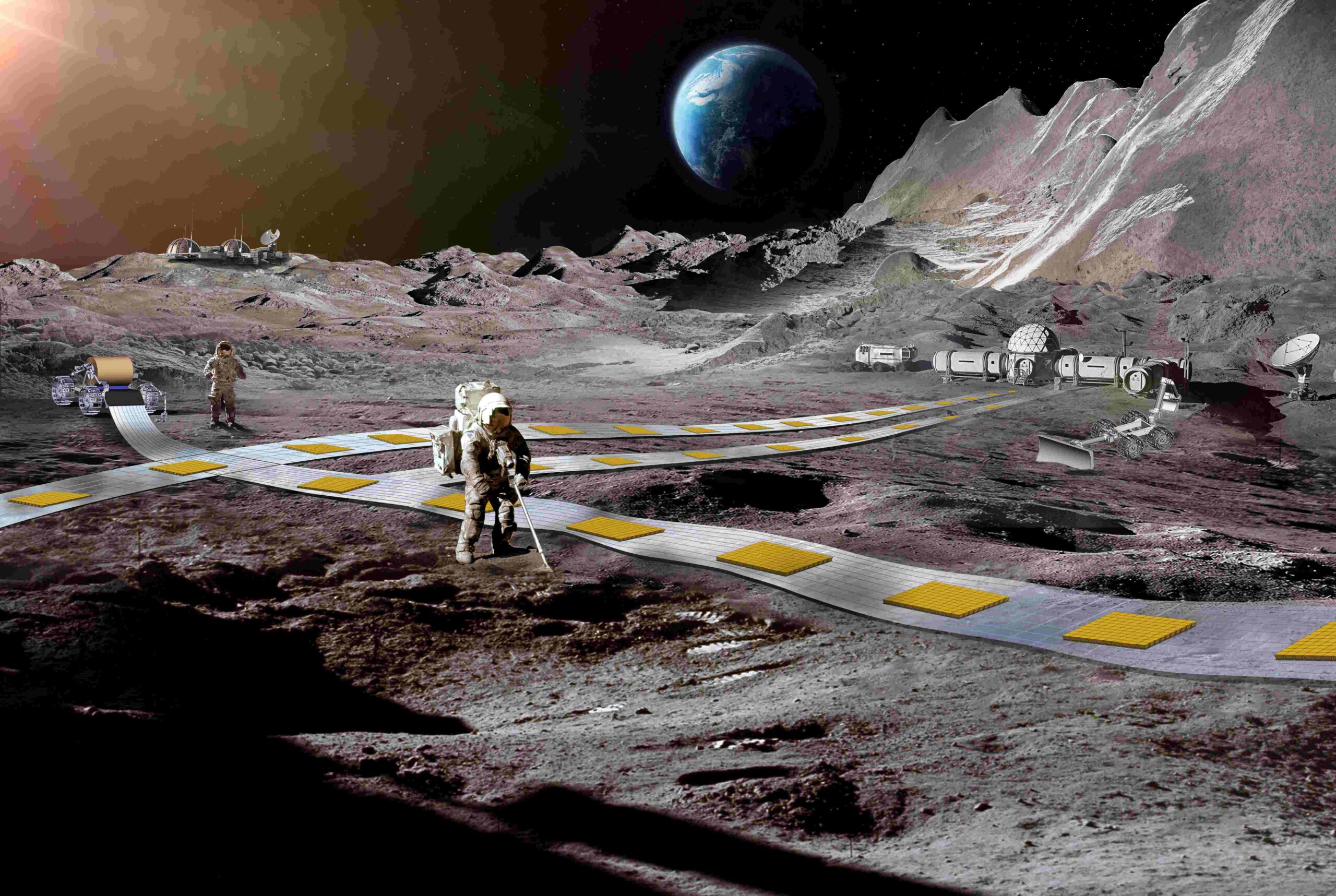NASA is planning for a levitating railway system on the moon, advancing a project in its latest round of funding.
The Flexible Levitation on a Track (FLOAT) proposal is one of six which will receive up to $900,000 to continue working on concepts.
FLOAT would be a lunar railway system, which promises to provide “reliable, autonomous, and efficient payload transport on the Moon”.
In a statement, NASA said the rail system could support daily operations of a sustainable lunar base as soon as the 2030s.
Ethan Schaler of NASA’s Jet Propulsion Laboratory said the FLOAT system used unpowered magnetic robots that levitate over a 3-layer flexible film track.
“A graphite layer enables robots to passively float over tracks using diamagnetic levitation, a flex-circuit layer generates electromagnetic thrust to controllably propel robots along tracks, and an optional thin-film solar panel layer generates power for the base when in sunlight,” Mr Schaler said.
He said FLOAT robots had no moving parts and levitated over the track to minimize lunar dust abrasion and wear, unlike lunar robots with wheels, legs, or tracks.
NASA said each of six concept studies had already completed the initial NASA Innovative Advanced Concepts (NIAC) phase, showing their futuristic ideas and now entered the NIAC Phase II conceptual to continue working over the next two years to address key remaining technical and budget hurdles and pave their development path forward.
NAIC Program Executive John Nelson said when Phase II was complete, the studies could advance to the final NIAC phase, earning additional funding and development consideration toward becoming a future aerospace mission.
“These diverse, science fiction-like concepts represent a fantastic class of Phase II studies,” Mr Nelson said.
The other five six concepts chosen for 2024 NIAC Phase II awards were:
Fluidic Telescope (FLUTE): Enabling the Next Generation of Large Space Observatories would create a large optical observatory in space using fluidic shaping of ionic liquids. These in-space observatories could potentially help investigate NASA’s highest priority astrophysics targets, including Earth-like exoplanets, first-generation stars, and young galaxies.
Pulsed Plasma Rocket: Shielded, Fast Transits for Humans to Mars is an innovative propulsion system that relies on using fission-generated packets of plasma for thrust. This system could significantly reduce travel times between Earth and any destination in the solar system.
The Great Observatory for Long Wavelengths (GO-LoW) could change the way NASA conducts astronomy. This mega constellation low-frequency radio telescope uses thousands of autonomous SmallSats capable of measuring the magnetic fields emitted from exoplanets and the cosmic dark ages.
Radioisotope Thermoradiative Cell Power Generator is investigating new in-space power sources, potentially operating at higher efficiencies than NASA legacy power generators. This technology could enable small exploration and science spacecraft in the future that are unable to carry bulky solar or nuclear power systems.
ScienceCraft for Outer Planet Exploration distributes Quantum Dot-based sensors throughout the surface of a solar sail, enabling it to become an innovative imager. Quantum physics would allow NASA to take scientific measurements through studying how the dots absorb light. By leveraging the solar sail’s area, it allows lighter, more cost-effective spacecraft to carry imagers across the solar system.
